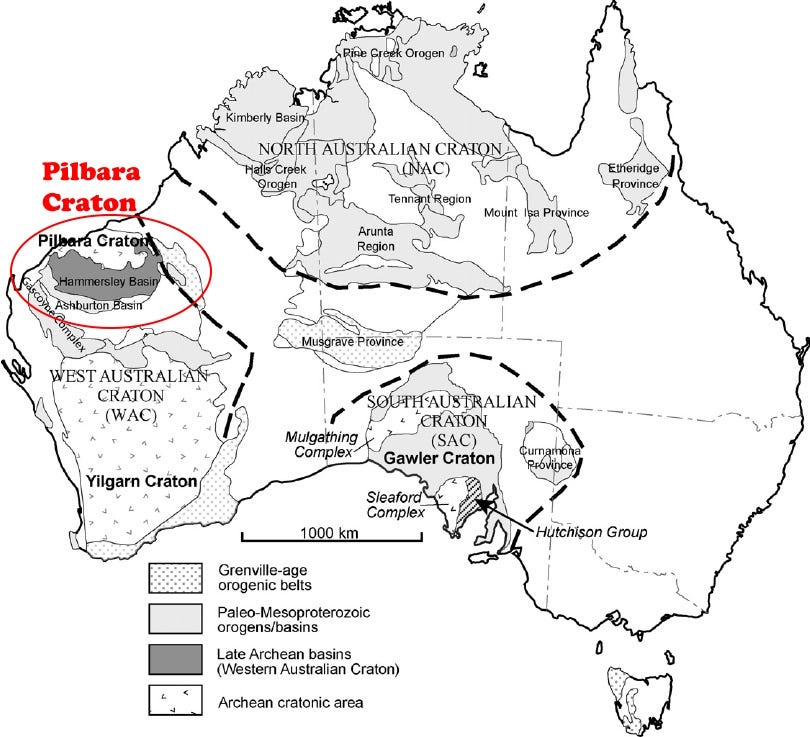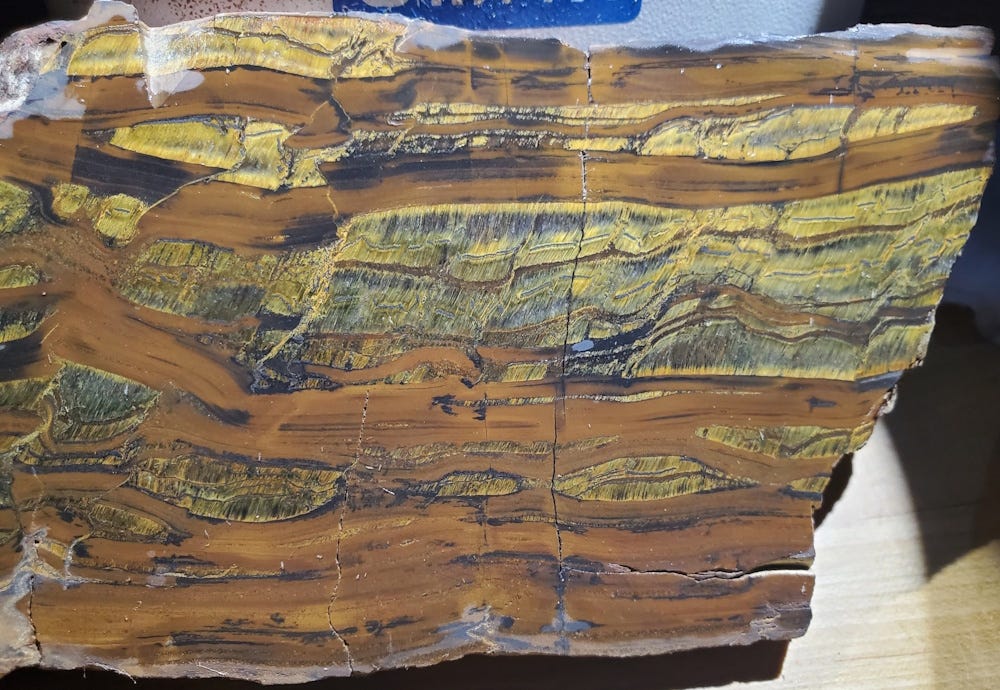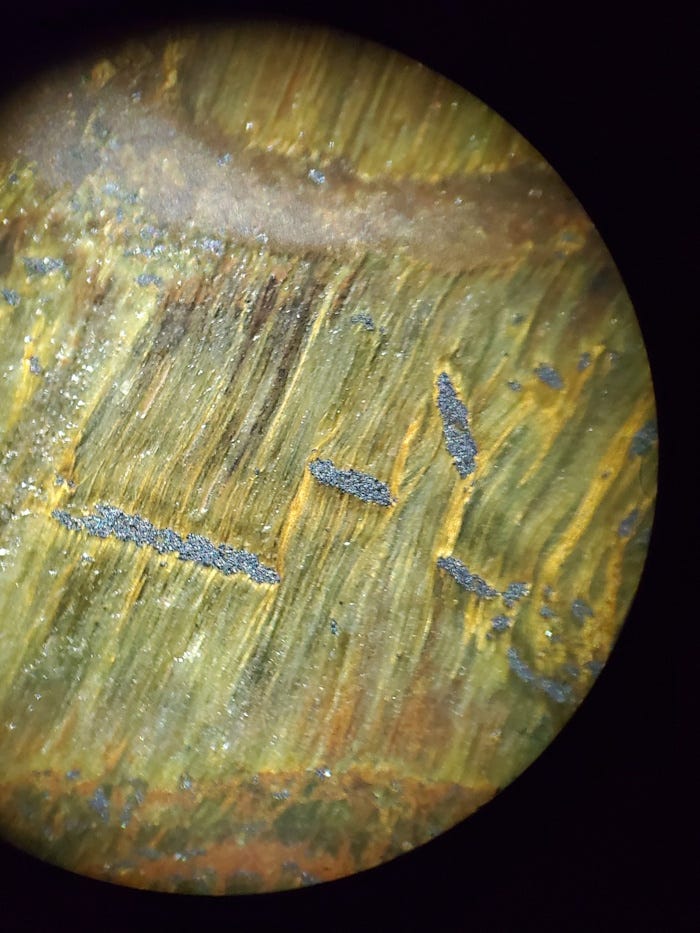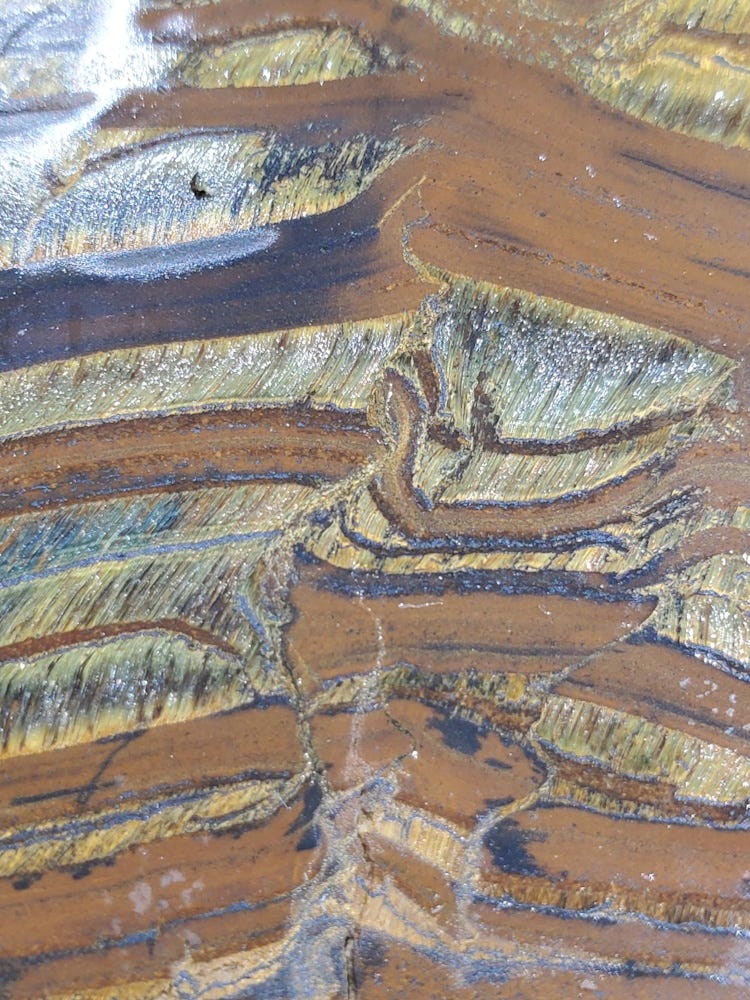Life in the USA is not normal. It feels pointless and trivial to be talking about small looks at the fascinating natural world when the country is being dismantled. But these posts will continue, as a statement of resistance. I hope you continue to enjoy and learn from them. Stand Up For Science!
This rock, called Tiger Iron in the lapidary trade, is a 2.2- to 2.5-billion-year-old banded iron formation showing tectonic folds of dark hematite, red-brown jasper and yellow tiger’s eye from Western Australia, in the Pilbara Craton, one of the oldest in the world.
Tiger Iron, particularly the tiger’s eye portions, might be relics of fossil stromatolites, laminations created by cyanobacteria (blue-green algae) mats, and the world's oldest known examples of fossil stromatolites (3.45 billion years old) are found near Marble Bar in the Pilbara Craton, but I think it’s more likely that it is standard banded iron formation and probably not stromatolites, but I definitely don’t know that for sure.
There are two well-known localities in Western Australia for this material, and both are quite similar to each other. I don’t think I can know for certain which is the source for my specimen, a slab I bought from a lapidary supply dealer. The locality in the Ord Ranges, Port Hedland Shire, is generally more thinly layered, and my best guess is that this specimen is from the Brockman Tiger Eye mine near Mt. Brockman in Ashburton Shire. If my Australian readers have better ideas, please let me know.

At Brockman, the iron formation is called the Marra Mamba Formation, part of the Hammersley Group that was deposited about 2.5 billion years ago. The sediment was a siliceous mud in a marine environment with a lot of iron that was dissolved in the sea water. With increasing oxygen in the atmosphere, created by cyanobacteria (the first oxygen-producing organisms), iron reacted with the oxygen in shallow water to precipitate episodically as the banded iron formations, which are thus the evidence for the Great Oxygenation Event that peaked about 2.3-2.1 billion years ago. Before that, earth’s atmosphere would not have been breathable by us or most other oxygen-dependent life.
Recent work (Courtney-Davies and others, 2024, A billion-year shift in the formation of Earth’s largest ore deposits: Proc. Natl. Acad. Sci. U.S.A. 121:31) suggests that some of the Hammersley iron formation may be as young as 1.4 billion years, far younger than previously thought.
Tiger’s eye, whether it represents stromatolites or some inorganic origin, has long been considered to be a pseudomorph, a replacement, of a fibrous amphibole (typically crocidolite, a fibrous variety of riebeckite, sodium-iron-magnesium silicate) by quartz, but a relatively new theory (Heaney, P.J., and Fisher, D.M., 2003, New interpretation of the origin of tiger's-eye: Geology, 31, 323-326) suggests it might be fibrous growth of quartz, hematite, and riebeckite during low-grade metamorphism.
Cat. No. 1919.







Mt. Brockman is likely Richard. I am not an expert on this material but I think that Mt. Brockman has the broader bands of "Tiger Eye" material, whereas Ord River is thinner bands forming "Tiger Iron". The latter resembling tiger fur.